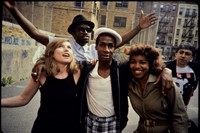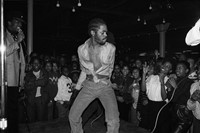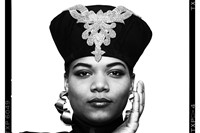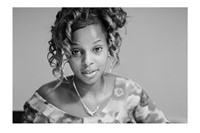A new exhibition at Fotografiska in New York explores hip-hop’s aesthetic evolution from 1972 to 2022 – here, co-curator Sacha Jenkins walks us through five images from the show
In 1973, a party in the basement of a West Bronx apartment building birthed the genre and cultural phenomenon now known as hip-hop. A new show at Fotografiska in New York – Hip Hop: Conscious, Unconscious, co-curated by Sacha Jenkins and Sally Berman – chronicles hip-hop’s evolution through more than 200 photographs. Spanning the years 1972 to 2022, the exhibition features both familiar and rare portraits of hip-hop’s most legendary stars and pioneers, taken by some of the best practitioners of the craft: Geoffroy de Boismenu’s iconic black and white portrait of Biggie smoking a blunt shares space with 1970s-era photographs of Bronx street gang members taken by Jean-Pierre Laffont. A fresh-faced Mary J Blige, only 20 years old, smiles shyly for the camera. Wyclef Jean and Lauryn Hill pose while on set for the music video for The Fugees’ song Vocab. Hip Hop: Conscious, Unconscious is an ecstatic, lively exploration of hip-hop’s indispensable role in global pop culture.
“My life and my career has been a direct byproduct of the things that I learned from hip-hop as a kid,” says co-curator Sacha Jenkins. “I always tell people that hip-hop really boils down to people. If it wasn’t for the people, reacting to their environment and finding ways to stay creative and express themselves, there would be no hip-hop.”
Below, Jenkins talks us through five seminal images from the exhibition, both old and new.
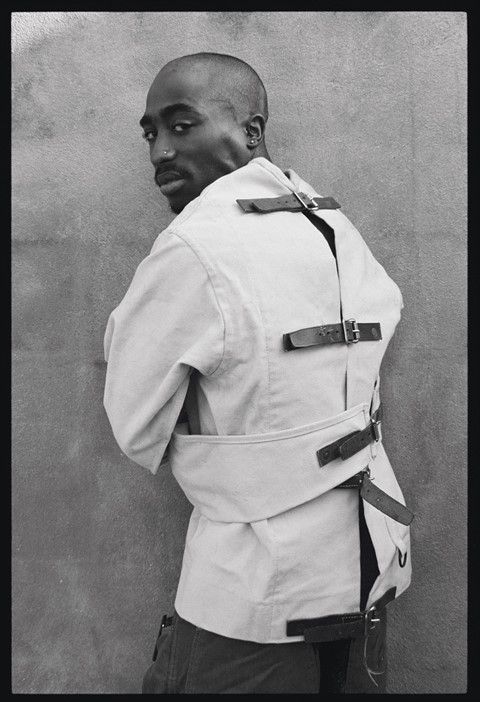
Tupac (straitjacket) by Shawn Mortensen (1993)
“That was first shot for the cover of Vibe magazine. The magazine was fairly new and had more of an R&B than hip-hop vibe. Putting Tupac on the cover at that point was pretty radical. That was a window into hip-hop being conscious of itself. We were just kids doing something on the streets and weren’t thinking about the future or money. It was just a thing that we did, along with basketball, baseball, and football. By the time Tupac is on the cover of Vibe in a straitjacket, there’s a whole music industry that is very successful, that has made people rich. Rappers have an understanding of their identity and their ownership of it.
“Tupac was a very intelligent guy. I don’t know if it was his idea to be in a straitjacket. They probably said to him, ‘Tupac, you’re wild and crazy. People don’t understand you, let’s put you in a straitjacket.’ He probably said, ‘OK, that’s cool, let’s try it.’ There’s probably a bunch of different shots from that day, but he tried the straitjacket. It feels sensational. He’s on the cover of Vibe magazine. he’s been in trouble a lot in the news, and now everyone’s wondering, is he crazy? The short answer is no, but the answer is yes. Once you say ‘Yes, he’s crazy,’ then where do you go from there?”
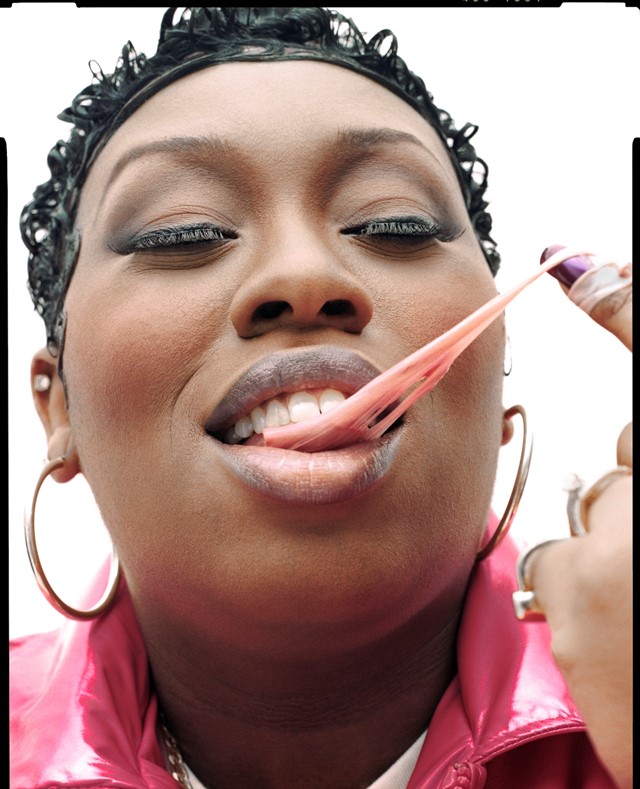
Missy Elliot for Spin Magazine, New York City by Christian Witkin (1998)
“This photo of Missy Elliott just personifies who she is. She’s larger than life, she’s colourful, she’s animated. She’s gum, she’s chewy, she’s elastic, she’s malleable. That image you see is very Missy; Missy in control of how she wants to be presented and represented. She represents a very strong woman in a very mean industry when it comes to women doing their thing. She’s been able to blaze trails because she is an individual who sticks to her guns and people really respect that about her. She brought a lot of playfulness and creativity to hip-hop. She’s not bound by genre. She’s limitless in terms of who she is as an artist.”
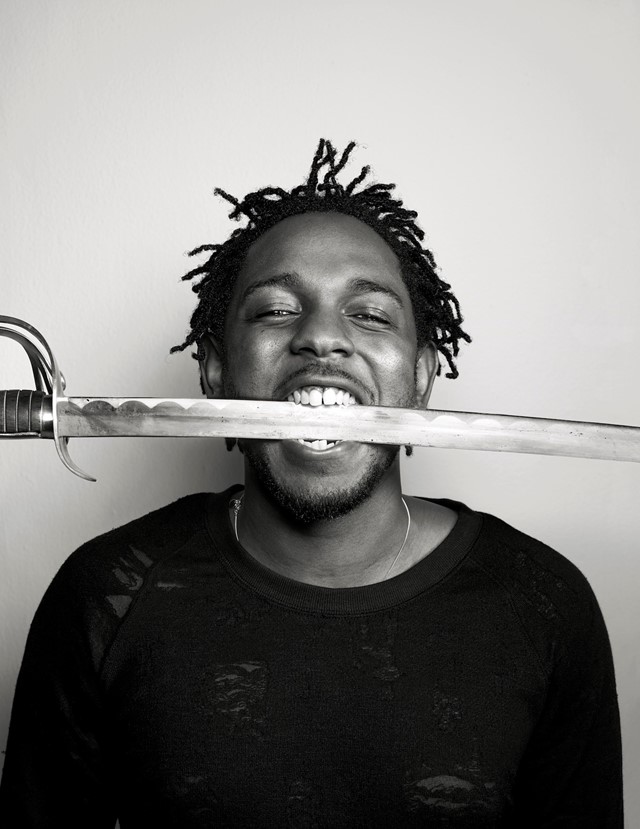
Kendrick Lamar, Cover of Issue 56 of Mass Appeal by Chris Buck (2015)
“There’s a photograph of Mick Jagger from 45 years prior doing the same thing, so this was a bit of an homage. But it also speaks to Kendrick being a wordsmith who’s very sharp-witted and sharp with his tongue. A lot of rappers probably wouldn’t have done that pose and that photograph, but it just shows you where he is in terms of being comfortable with who he is, first and foremost being an avatar or promoter of creativity and expression. He’s a Pulitzer Prize-winning rapper, writer, and emcee. I mean that’s real, that’s big time. He’s just a really special artist.”
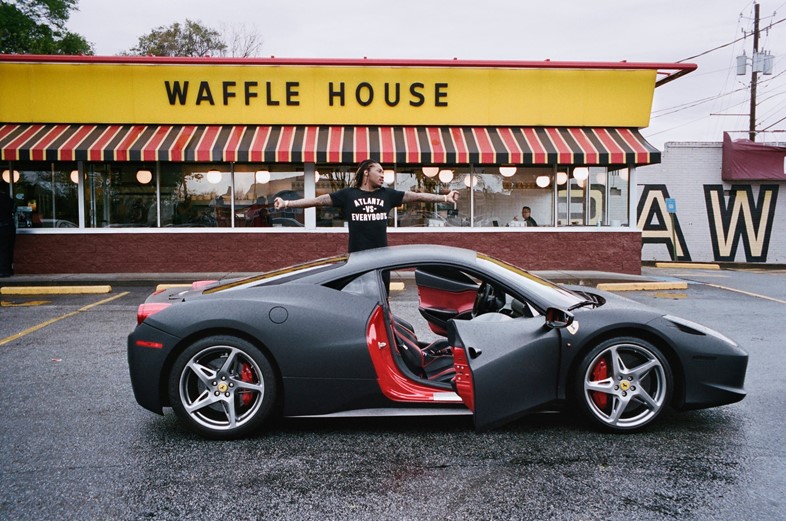
Future, Atlanta by Theo Wenner (2016)
“I mean, Waffle House says it all. It’s the place where people meet. Waffle House has been somewhat controversial when it comes to people of colour – that’s a whole separate conversation – but regardless, we patronise Waffle House. Even when we’re rich and famous and successful and kings and queens of our towns and respective cities, we still have time to go to the Waffle House. There’s something humble about the Waffle House and Future together that made for a cool photograph.”
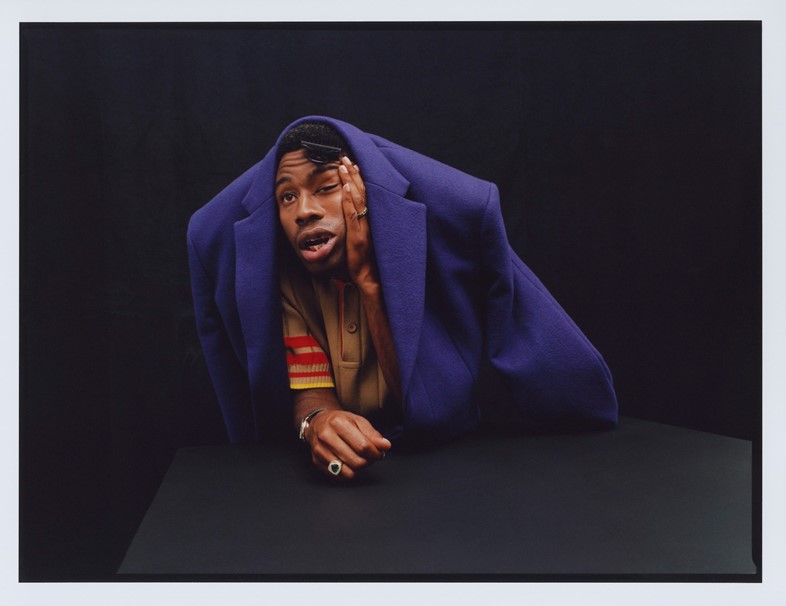
Tyler, the Creator posing for WSJ Magazine by Campbell Addy (2022)
“Tyler has a face that is classic. I could see that face in the 1940s, I could see that face in the 1960s, I could see that face in the 1990s. It makes you feel like he’s been here a few different times. He represents where hip-hop has gone. Hip-hop in many ways is limitless. When hip-hop started, it was dealing with its own internal biases, issues and insecurities. Tyler has thrown all that stuff out the window. I’m excited for this generation of artists, in terms of the limitations they don’t have. Hopefully we continue to learn from each other. We can learn from them, they can learn from us. I’m sure there are lots of artists from my era who would have loved to have had the freedom or feel confident enough to be as free as Tyler, the Creator.”
Hip-Hop: Conscious, Unconscious is on show at Fotografiska in New York from 26 January - 21 May 2023.
